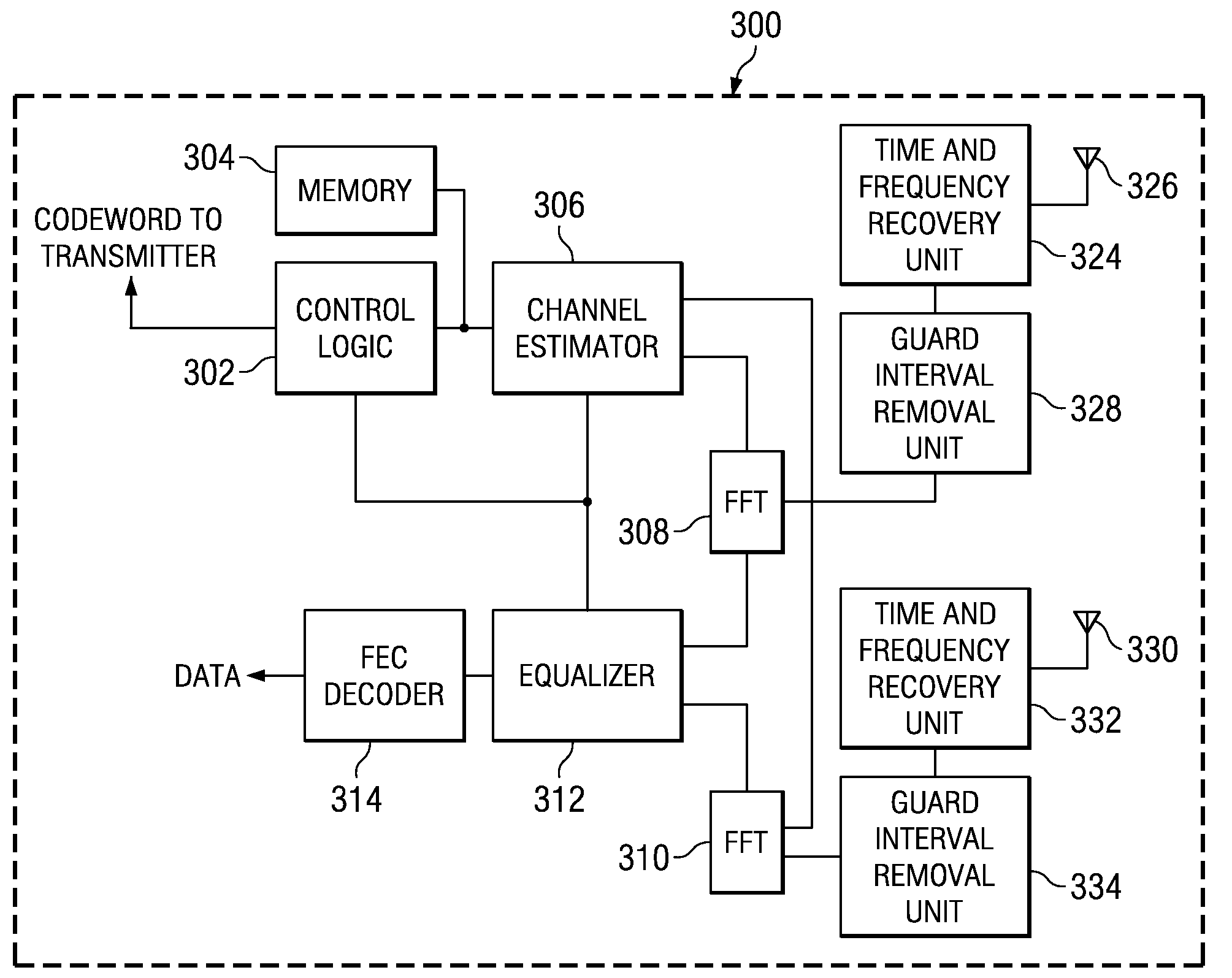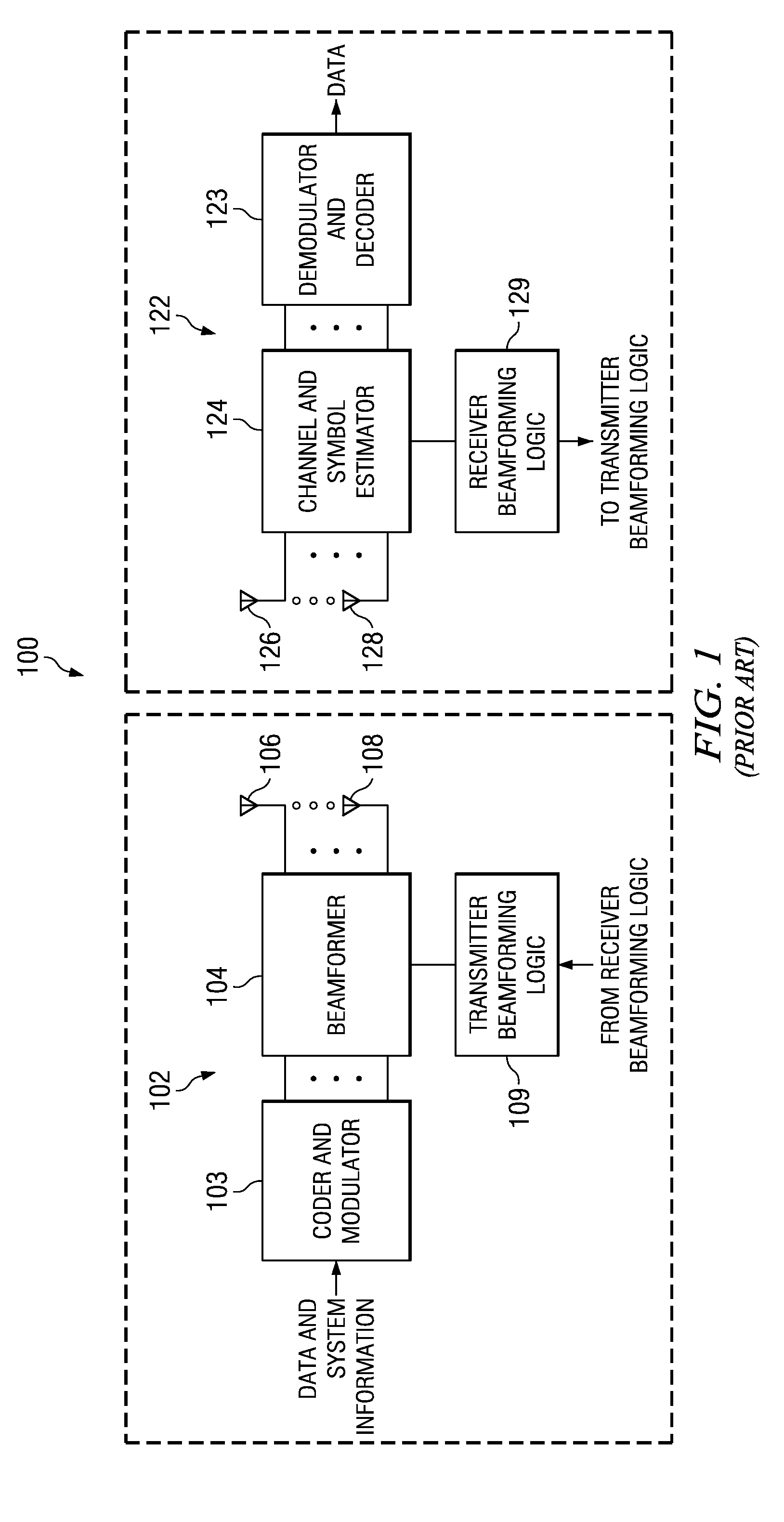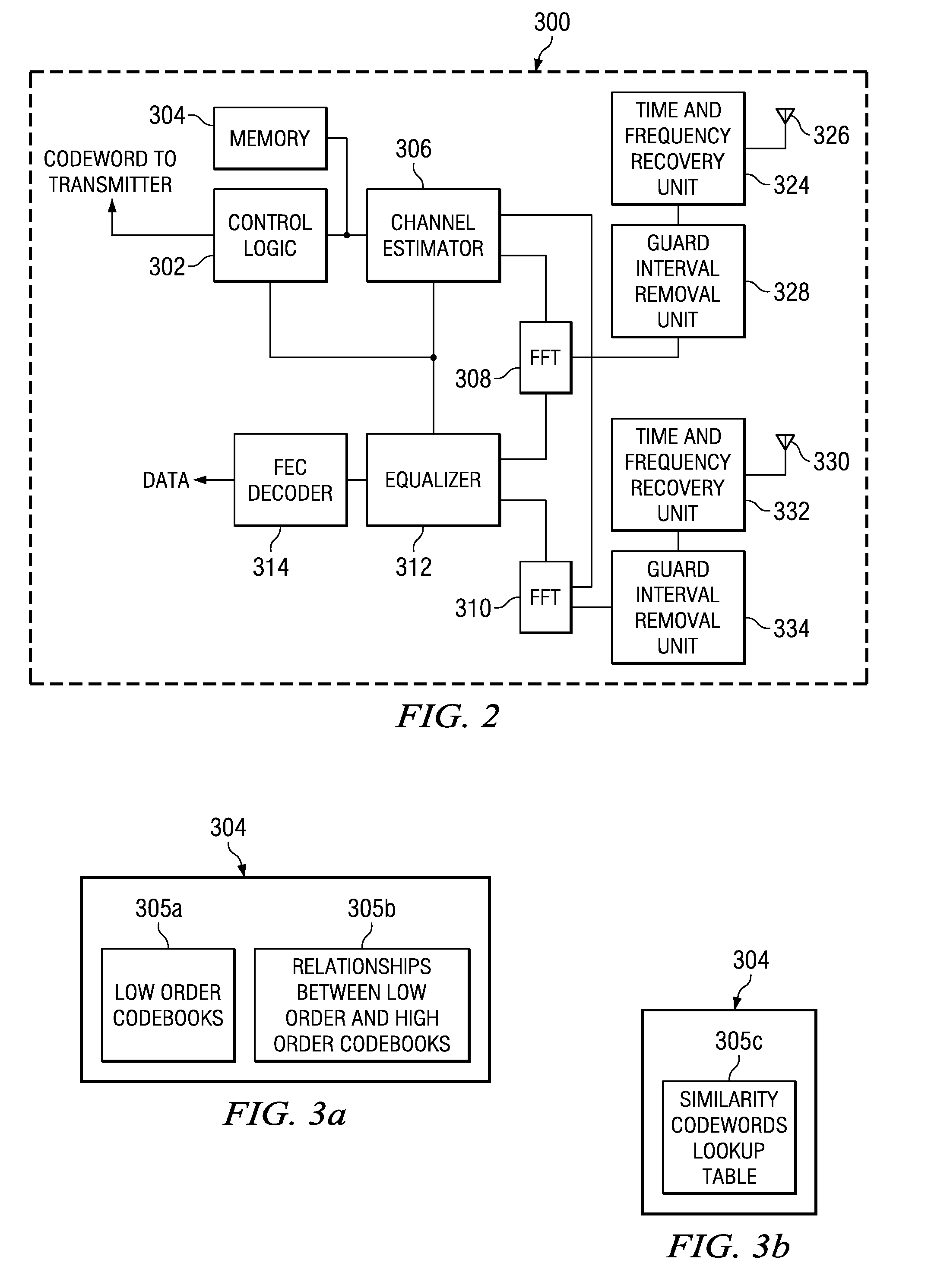Low complexity precoding matrix selection
a precoding matrix and low complexity technology, applied in the field of multi-input multi-output, can solve the problems of increasing the complexity or resource consumption of transceivers, increasing the complexity of beamforming systems, and computationally intensive, and adding an element of delay in returning an indication
- Summary
- Abstract
- Description
- Claims
- Application Information
AI Technical Summary
Problems solved by technology
Method used
Image
Examples
process 500
[0157]Process 500 of FIG. 5a and operations 504 and 508 of FIGS. 5b, 5c also apply to generating a matrix codeword index for identifying a matrix codeword in CB(3, 3, 6). The codeword identification process performed for identifying a codeword in CB(3, 3, 6) is referred to herein as “codeword identification process 4 (CIP 4).” CB(3, 3, 6) is a generated from the Householder concatenation transformation for two codebooks, CB(3, 1, 3) and CB(2, 1, 3) as described by Eq. 17, below.
CB(Nt,3,6)8(i-1)+j=H(CB(Nt,1,3)i)[100⋮H(CB(Nt-1,1,3)j)0]Eq.17
[0158]where 1≦i≦8 and 1≦j≦8.
[0159]There is a salient difference between process 500 and operations 504, 508 as they apply to CB(3, 3, 6) as opposed to CB(3, 2, 6), and CB(4, 2, 6) for which their application was described in greater detail above. Consequently, one of ordinary skill in the art would appreciate that it is not necessary to repeat most of the description of process 500 and operations 504, 408. A salient difference arises when control lo...
PUM
 Login to View More
Login to View More Abstract
Description
Claims
Application Information
 Login to View More
Login to View More - R&D
- Intellectual Property
- Life Sciences
- Materials
- Tech Scout
- Unparalleled Data Quality
- Higher Quality Content
- 60% Fewer Hallucinations
Browse by: Latest US Patents, China's latest patents, Technical Efficacy Thesaurus, Application Domain, Technology Topic, Popular Technical Reports.
© 2025 PatSnap. All rights reserved.Legal|Privacy policy|Modern Slavery Act Transparency Statement|Sitemap|About US| Contact US: help@patsnap.com



